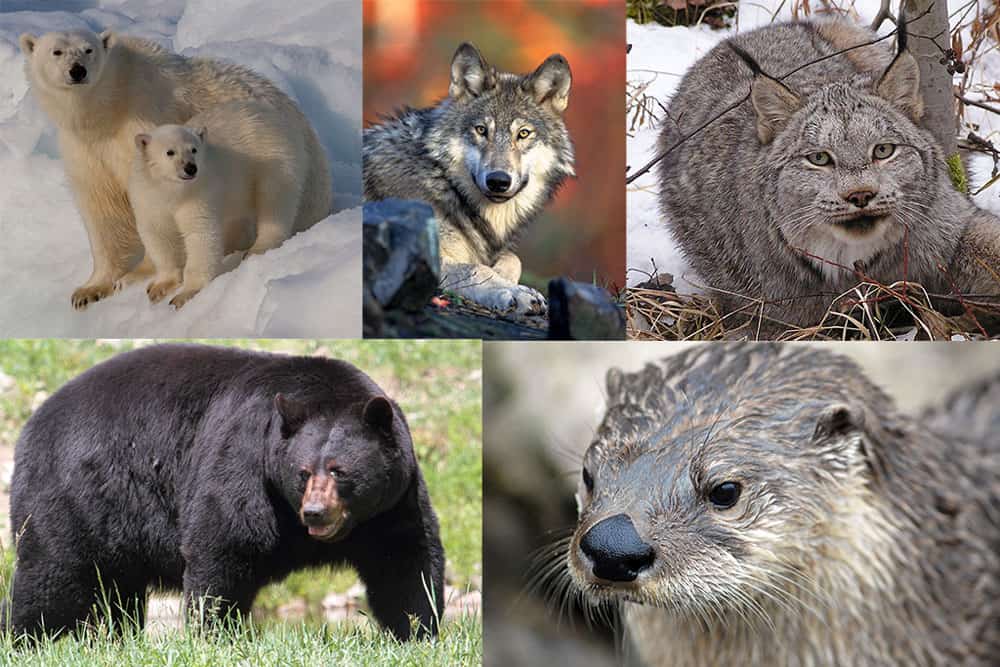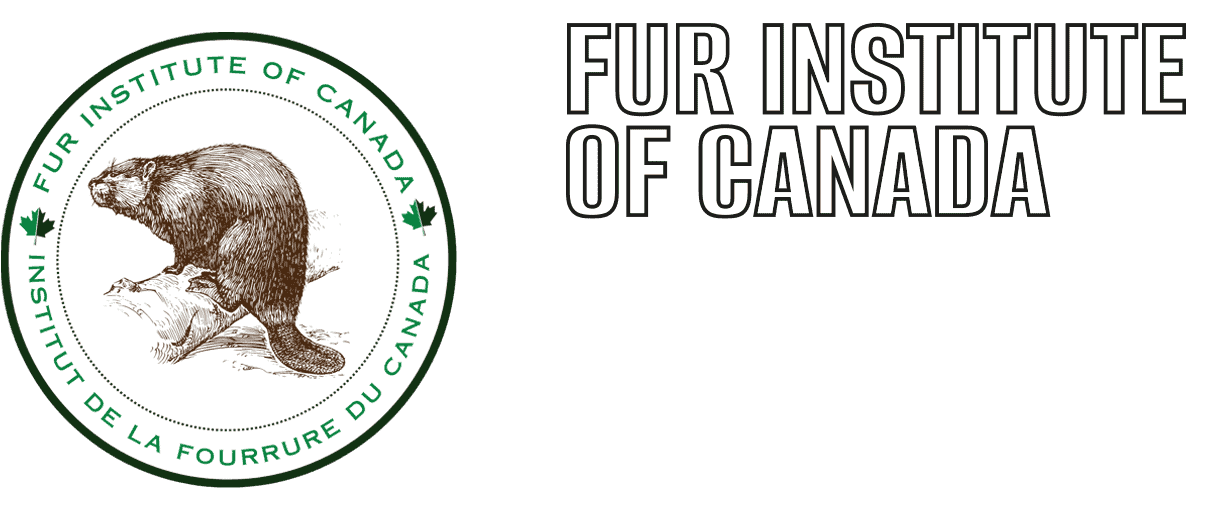Furbearer Management

Photos: AWeith, CC BY-SA 4.0 ; Gary Kramer; Fur Institute of Canada; Chris Paul from England, CC BY 2.0 ; Cephas, CC BY-SA 3.0 ; all via Wikimedia Commons except photo #3.
Population Assessments
Population assessments of wild flora and fauna are key to sound management practices, but while they are based on science, some guesswork is inevitable. For this reason, arriving at the most accurate assessments possible is a collective effort.
Raw data are typically gathered in the field by wildlife managers employed by provincial and territorial governments – the primary managers of furbearers in Canada. But these wildlife managers cannot do it alone. They rely heavily on people who live on the land. Indeed, trappers and hunters are often called the eyes and ears of wildlife managers, as they provide invaluable data on the abundance of species in habitats that are often extremely remote.
Increasingly, provincial and territorial governments are also incorporating input in management decisions from Indigenous organisations. These organisations not only represent large numbers of people living on the land, they also have a wealth of traditional knowledge on how to use wildlife sustainably.
Meanwhile, the federal government plays a leadership role in two specific areas.
As a Party to the Convention on International Trade in Endangered Species of Wild Fauna and Flora (CITES), the federal government is responsible for facilitating and regulating international trade.
The federal government is also responsible for the conservation of endangered species under the Species at Risk Act (SARA), advised by the Committee on the Status of Endangered Wildlife in Canada (COSEWIC).
CITES
Established in 1975, CITES is an international agreement between governments (Parties) aimed at minimising any threat to wild animal and plant populations caused by international trade. Canada ratified the Convention in 1975.
Although CITES is legally binding on the Parties, it does not take the place of national laws. Rather, it provides a framework to be respected by each Party, which then passes its own domestic legislation to ensure that CITES is implemented at the national level. As of 2023, CITES has 184 Parties, including 183 states and the European Union.
Some 6,610 species of animals and 34,310 species of plants and their products are currently protected by CITES against over-exploitation. They are listed on three Appendices, according to how threatened they are by international trade. Only a few Canadian furbearers appear on any of these Appendices, with all except one being on Appendix II.
Appendix I lists species threatened with extinction, and no international trade is permitted in them. Canada has just one furbearer on this Appendix, the extirpated black-footed ferret.(1)
Appendix II accounts for the vast majority of species listed by CITES. Trade in these species must be controlled to ensure it does not threaten their survival. Sometimes included are species which may not themselves be threatened, but they are hard to distinguish from species which are. And in some cases, rather than a whole species being listed, the Appendix may list only a subspecies, or a geographically separate population, such as that of just one country.
Canadian furbearers that are listed in Appendix II are:
- American black bear (Ursus americanus)
- Bobcat (Lynx rufus)
- Brown bear (Ursus arctos)
- Canada lynx (Lynx canadensis)
- Gray wolf (Canis lupus)
- North American river otter (Lontra canadensis)
- Polar bear (Ursus maritimus)
Appendix III lists species that are protected in at least one country that has asked other Parties for assistance in controlling the trade. No Canadian furbearers are listed in this Appendix.
(1) Historically, the black-footed ferret (Mustela nigripes) inhabited prairies across the US and into southern Alberta and Saskatchewan. In 1979 it was declared extinct, following decades of habitat loss, indirect poisoning from the control of its main food source, prairie dogs, and disease. Then in 1981 a residual population was found in Wyoming. It has since been reintroduced at several sites in the US, and one in Canada, Grasslands National Park in Saskatchewan.
COSEWIC
Established in 1977, COSEWIC is an independent advisory panel to the Minister of Environment and Climate Change Canada. COSEWIC is made up of biologists from each provincial and territorial government wildlife agency and four federal agencies, non-government scientists, and expert representatives of Indigenous organisations. It meets twice a year to assess the status of species at risk.
When Canada passed the Species at Risk Act in 2002, the Act specified that the foremost function of COSEWIC would be to “assess the status of each wildlife species considered by COSEWIC to be at risk and, as part of the assessment, identify existing and potential threats to the species.”
As of May 2022, COSEWIC had conducted assessments for 864 species of fauna and flora in the following “risk” categories: 371 Endangered, 196 Threatened, 253 of Special Concern, 21 Extirpated (i.e., no longer found in the wild in Canada), and 23 Extinct.
SPECIES AT RISK ACT
The Species at Risk Act (SARA), 2002, is federal legislation aimed at meeting one of Canada’s key commitments under the international Convention on Biological Diversity, 1992. In general terms, its objective is to prevent wildlife species from disappearing. More specifically, it provides for the recovery of species that are extirpated, endangered, or threatened as a result of human activity, and for the management of species of special concern to prevent them becoming endangered or threatened.
SARA defines a method to determine steps that need to be taken to help protect existing relatively healthy habitats, as well as to recover threatened ones. It also identifies ways in which governments, organizations, and individuals can work together to preserve species at risk, and establishes penalties for failure to obey the law.
As for which wildlife species may qualify for legal protection and recovery under SARA, the Act specifically designates COSEWIC as the body responsible for identifying and assessing species at risk.
